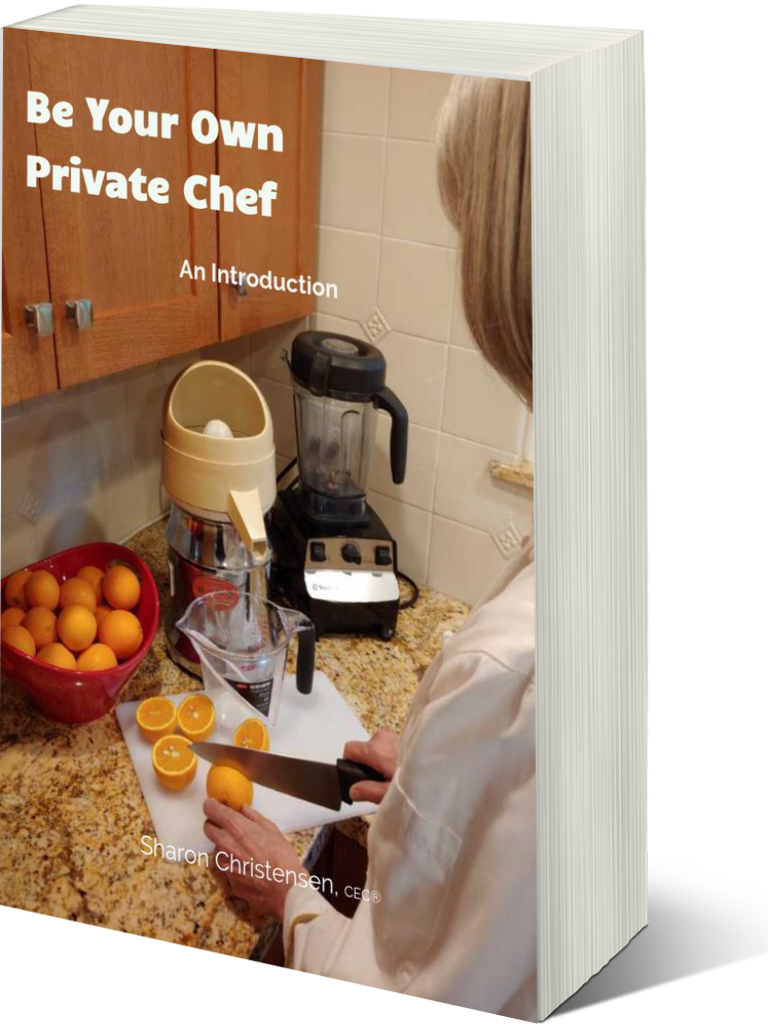After writing Vegan Cuisine for the Commercial Kitchen
, newsletter readers, friends, and family wanted lessons for home cooks. Be Your Own Private Chef
is that dream come true for the writer, as well as home cooks.
These recipes are for almost anyone. Aside from having no meat, fish, dairy and egg allergens, the recipes are also free of peanuts, pecans, walnuts, soybeans and gluten.
At the end of each lesson is a produce and pantry list. The pantry items are shelf stable for weeks, whereas the produce items are usually refrigerated, and those noted with an asterisk* are best used the week they are bought. Each list is specific for the lesson designated at the top of the page.
The Glossary is typically found in the back of a book. However, this glossary is in the front to share concepts and explanations best perused before reading the lessons. Throughout the course, words and phrases found in the glossary will be italicized in lessons or in a Produce and Pantry List. Hopefully, this feature adds ease of re-checking descriptions on the glossary page.
Occasionally, a recipe name is on the produce list such as Almond Creme Cheez**. The fact that it is italicized, and has two asterisks means that 1) the recipe is in this course of lessons, and 2) a certain amount of the recipe is used in another recipe—for instance, Almond Creme Cheez
is an ingredient in Red Potato Salad.
An explanation of some recipe notations is also in order. Your eye may catch the abbreviation “tbl” in one recipe, but find “tablespoons” in another. This isn't writer's oversight. Though the software program is a powerful one, it doesn't do it all. Please overlook its discrepancy between certain abbreviated and spelled-out units of measure.
These have to do with the software's recognition of scaling, costing, and nutritional analysis functions.Accuracy of ingredient quantity is particularly important to costing, scaling and figuring nutritional analysis. So thank you in advance for getting used to thinking 1/3 and 2/3 when you see “.33 and .66.” A nutritional analysis follows each recipe and can be printed out just as the lessons and recipes can.
At the end of each lesson is a hot link to send any email question you may have about something in a specific lesson or the recipes connected with it. Please allow three business days for a reply to questions. Often, an answer will come sooner.
Thank you for investing your time and money in this course. At the Vegan Culinary Academy, our goal is to instruct beyond your expectations. With these lessons and recipes, you will gain know-how to create your own.
Sincerely,
Chef Sharon
